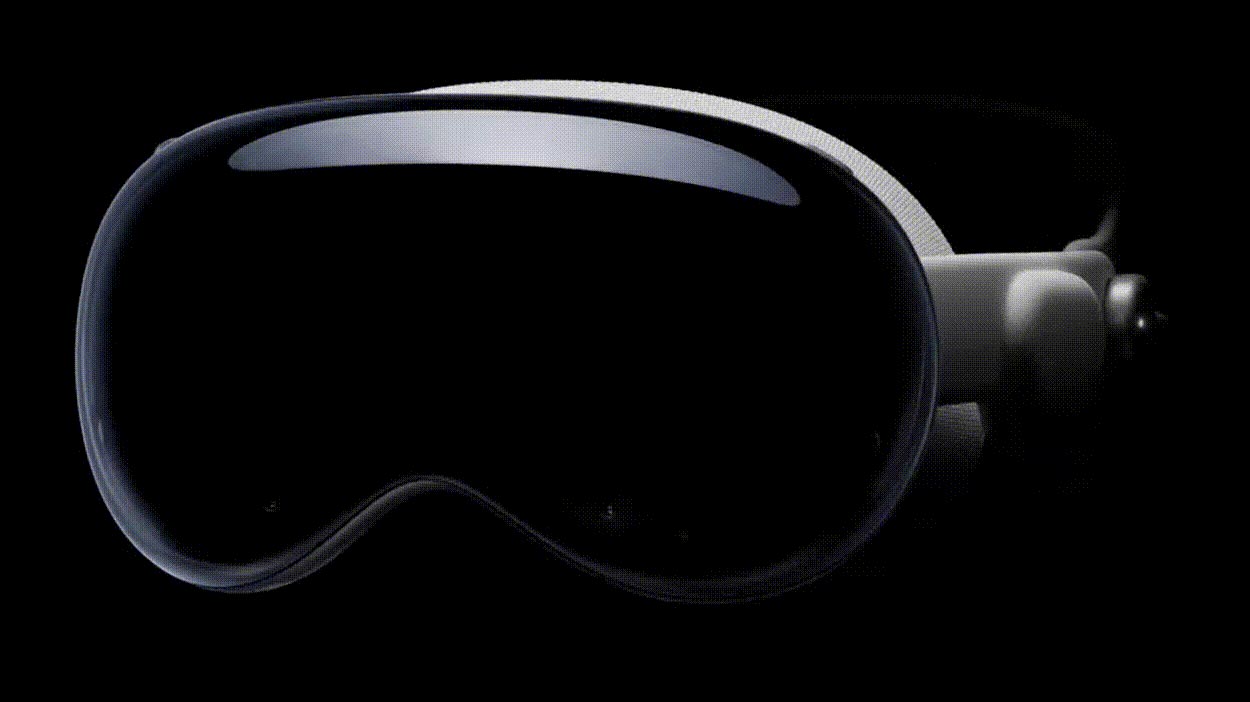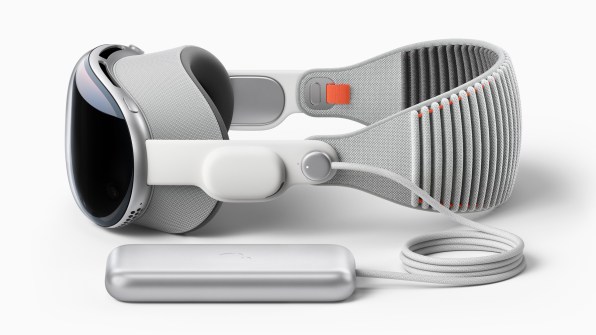- | 8:00 am
Apple’s new Vision Pro headset is more for developers than consumers (for now)
Apple developers are likely to be excited and motivated to create for the new platform, especially if the price of the headset comes down in future releases.

For the first time since Tim Cook became CEO, Apple has introduced a whole new computing platform. At today’s WWDC developers event in Cupertino, Apple unveiled its Apple Vision Pro mixed reality headset, its first such wearable.
“In the same way that Mac introduced us to personal computing, and iPhone introduced us to mobile computing, Apple Vision Pro will introduce us to spatial computing,” Cook said during the prerecorded announcement video shown to developers and media at Apple’s headquarters. “This marks the beginning of a journey that will bring a new dimension to powerful personal technology.”
The success or failure of the product, which is due out early next year and will retail for $3,499, will say everything about whether or not Apple can still jump into nascent technology spaces with a product that’s demonstrably cooler, funner, and more useful than whatever its peers have cooked up. Time will tell whether the Vision Pro can do for the XR space what the iPhone did for smartphones years ago.

“I think they connected the dots between the Mac and the iPhone as basically moments that led to new paradigms of computing . . . so the Mac with mouse and keyboard and a GUI, iPhone with touch computing . . . and they tried to connect this [AR headset] to that,” Creative Strategies principal analyst Ben Bajarin tells Fast Company. (Bajarin received a hands-on demonstration of the new Vision Pro.) “They’re telling you they feel like this idea of spatial computing is that next platform.”
“Apple doesn’t just excel at form factors in devices and software—they’re often best in pioneering the way we interact with these devices,” adds venture capitalist and author Matthew Ball. “Pinch-to-zoom [in the iPhone] was an entirely novel form of interaction. I think one big thing that we can’t yet see is how Apple has found more natural and intuitive ways for us to interact in 3D space without a control device. Apple emphasized that, unlike other headsets, this one does not include a controller.”

One of the standout features of the Vision Pro is the large dial at the top right of the headset, with which the wearer can control how digital content mixes with the real world they see through the front-facing cameras. “One of the unique things Apple does is present these experiences in a way that doesn’t isolate,” says Dr. Helen Papagiannis of Augmented Stories, and the best-selling author of Augmented Human. “From being able to glance at a notification in physical reality, to completely filling the entirety of your space in a meditation or entertainment experience, you have the ability to choose and customize your reality.”
The new Apple headset could turn people who already use Apple products into fans of AR and VR content. “Apple Reality Pro’s biggest advantage is integration into the Apple ecosystem—the all-important ability to go from the iPhone, to iPad, to Apple Watch with a similar user-experience and low barrier to entry,” says VRdirect founder and CEO Rolf Illenberger in a statement to Fast Company. “That’s why the VR community has been excited for this launch. That’s where we believe the potential exists to create believers in AR and VR headsets.”
NOW IT’S UP TO DEVELOPERS
In Monday’s presentation, Apple showed people doing familiar things with the Vision Pro, such as video calling, gaming, and working in Microsoft documents. These are not wholly new applications; they’re common applications that have been moved from 2D environments into 3D. Nor were any of them obvious “killer apps” for mixed reality. Ball, the venture capitalist, points out that by scheduling the release of the new Vision Pro for next year, Apple left a lot of time for developers to come up with new apps that might make the Vision Pro indispensable for more people.
Apple developers are likely to be excited and motivated to create for the new platform, especially if the price of the headset comes down in future releases (it will). Developing apps for 3D computing is exciting, from a purely technological standpoint. “Throughout all of technology history, software has been defined by borders, by the screen size that you have in front of you,” Creative Strategies’ Bajarin told Fast Company. “Apple has essentially eliminated that barrier. So now, it’s a question of what you can do as a developer when you’re no longer constrained by the screen size of a physical device.”

During the first year of life for the Vision Pro, developers will likely be the product’s main customer base. With its $3,499 price tag, the Apple Vision Pro is seven times more expensive than that of its likely closest competitor, Meta’s new Quest 3 ($499). “That’s going to be hard, at least for the foreseeable future, for the average American to afford,” Ball says.
As to whether the Vision Pro might signal the rebirth of the metaverse, some people certainly think so. “Today, I wouldn’t want to be one of the analysts who said the metaverse was doomed because of Facebook,” says Mytaverse cofounder and CEO Kenneth Landau. “Apple’s Vision Pro shows that the future of the internet is 3D.”






































